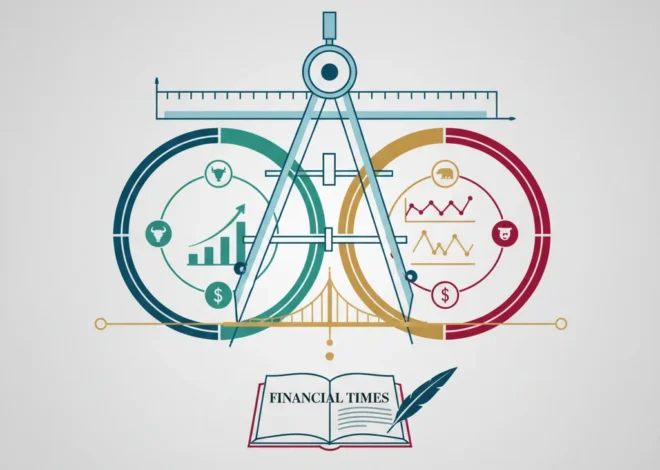
The Heart’s High-Risk Investment: When Emotional Bonds Become Financial Black Holes
“You are willing to lose the money, but not the person.”
This single, heartbreaking sentence from Varun Yadav, a man who lost his entire life savings to a romance scam, encapsulates a terrifying new reality in the world of finance and investing. As detailed in a poignant report by the BBC, Mr. Yadav’s story is not an isolated incident of misplaced trust. It is a case study in a sophisticated and rapidly growing form of financial crime that sits at the dangerous intersection of human psychology, digital relationships, and modern financial technology.
For investors, finance professionals, and business leaders, these schemes represent more than just personal tragedies; they signify a fundamental evolution in risk. The greatest threat to a portfolio may no longer be market volatility or a downturn in the economy, but a meticulously crafted emotional manipulation that bypasses every traditional security measure. This is the world of “pig butchering” scams, where the target is fattened with affection and promises before being led to a financial slaughter.
In this analysis, we will dissect the anatomy of these devastating scams, explore the behavioral economics that make them so effective, and examine the critical role that the banking and fintech sectors must play in combating this pervasive threat.
The Anatomy of a Modern Financial Heist
What happened to Varun Yadav follows a playbook that is now chillingly familiar to law enforcement and cybersecurity experts. Known as “Sha Zhu Pan” or “pig butchering,” this long-con strategy combines the emotional manipulation of a classic romance scam with the allure of high-yield investment fraud. The process is methodical, patient, and devastatingly effective.
- The Approach: It begins innocuously on a dating app, social media platform, or even through a misdirected text message. The scammer creates a highly attractive, often fictional, persona—a successful professional with a polished lifestyle.
- Building the Bond: Over weeks or months, the fraudster invests significant time building a deep, seemingly genuine emotional connection. They engage in daily conversations, share personal stories, and create an illusion of a real, budding relationship. This is the crucial “fattening” phase.
- The Pivot to Finance: Once profound trust is established, the conversation subtly shifts to finance. The scammer might mention their success in the stock market, cryptocurrency trading, or a niche investment area. They portray themselves as a savvy investor, often attributing their wealth to a secret trading platform or a family member’s insider knowledge.
- The Bait: They invite the victim to participate, starting with a small, low-risk investment. To build confidence, the scammer guides them through a sophisticated-looking (but completely fake) fintech app or website. This platform will show incredible, rapid returns on the initial investment, and the victim is even allowed to withdraw this “profit” to prove the system’s legitimacy.
- The Slaughter: Convinced of the opportunity’s authenticity and trusting their “partner,” the victim is encouraged to invest larger and larger sums—their savings, retirement funds, or even money borrowed from loans. The numbers on the fake trading platform continue to soar, feeding the illusion of immense wealth. When the victim finally tries to withdraw their capital, the platform freezes, the scammer vanishes, and the money is gone forever, often laundered through a complex web of international accounts and blockchain transactions.
This calculated process exploits not greed, but trust. The victim isn’t just chasing returns; they are building a future with someone they believe they love. The investment becomes a shared dream, making the eventual betrayal both financially and emotionally catastrophic.
Strategic Deployment: What a National Guard Presence in Chicago Teaches Us About Financial Fortitude
The Escalating Threat: A Look at the Numbers
The financial toll of these scams is staggering and growing at an alarming rate. While individual stories are powerful, the aggregate data reveals a systemic crisis. According to the U.S. Federal Trade Commission (FTC), the scale of this fraud is a major concern for the national economy.
The table below highlights the reported losses from romance scams in the United States over recent years, showcasing a disturbing trend.
| Year | Reported Losses (USD) | Number of Reports |
|---|---|---|
| 2021 | $547 Million | ~56,000 |
| 2022 | $1.3 Billion | ~70,000 |
| 2023 | $1.14 Billion | ~64,000 |
Source: Data compiled from official reports by the Federal Trade Commission (FTC). Note that 2022’s and 2023’s figures also include the increasingly prevalent crypto-investment schemes tied to romance scams.
These figures, while enormous, are widely believed to be significantly underreported. Victims often feel a deep sense of shame or embarrassment, preventing them from coming forward. For every reported case, many more likely suffer in silence.
The Psychological Battlefield: Where Behavioral Economics Fails
From a purely rational, economic perspective, the decisions made by victims seem illogical. Why would someone wire their life savings to a person they’ve never met in person, based on a screenshot of a trading account? The answer lies in understanding that these are not financial decisions; they are emotional ones.
Scammers are master manipulators of human psychology, exploiting well-documented cognitive biases:
- Emotional Hijacking: By creating a powerful emotional bond, scammers bypass their victim’s logical reasoning. The brain’s emotional center (the amygdala) overrides the rational prefrontal cortex. The prospect of losing the relationship becomes more terrifying than the prospect of losing money.
- Sunk Cost Fallacy: As the victim invests more time, emotion, and money, it becomes psychologically harder to pull out. They feel they have “too much invested” in the relationship and the financial venture to back out now, even when red flags appear.
- Confirmation Bias: Victims will actively look for evidence that confirms their belief in the relationship and the investment’s legitimacy, while ignoring warning signs. The initial “profits” they were allowed to withdraw serve as powerful confirmation.
As one psychological analysis of romance scams notes, the perpetrators create a “hyper-personal” connection that makes the victim feel uniquely special and understood. This bond becomes a powerful tool for coercion, turning the victim’s own emotional needs into a weapon against them.
From Pop Icon to Portfolio Risk: The Unseen Economics of Brand Beckham
The Role of Fintech and Banking: Enabler or Protector?
The very innovations that have made modern finance more accessible and efficient have also, paradoxically, created fertile ground for these scams. The rapid evolution of financial technology has outpaced the development of adequate safeguards.
Scammers exploit several key features of the modern banking and fintech landscape:
- Instantaneous Transfers: Wire services and peer-to-peer payment apps allow for the irreversible movement of vast sums of money in minutes, leaving little time for banks or victims to halt a fraudulent transaction.
- Cryptocurrency & Blockchain: The perceived anonymity and decentralized nature of blockchain technology make it an ideal tool for laundering illicit funds. Once money is converted to cryptocurrency and moved through various wallets, it becomes nearly impossible for law enforcement to trace and recover.
- Slick User Interfaces: Scammers no longer rely on poorly worded emails. They create highly sophisticated, professional-looking fake trading apps and websites that mimic legitimate fintech platforms, complete with real-time stock market data feeds and polished charts.
This reality places a heavy burden of responsibility on financial institutions. A report by J.P. Morgan on these scams highlights the need for banks to enhance their fraud detection systems. Traditional red flags, like a single large transfer to a foreign account, are being replaced by more complex patterns. Advanced AI and machine learning are needed to detect anomalous behavior, such as a client suddenly liquidating long-term investments or engaging in high-frequency crypto trading inconsistent with their past behavior.
The challenge for the banking sector is to implement stronger security protocols without creating undue friction for legitimate customers. It’s a delicate balance between security and user experience, but one that is essential to maintaining trust in the digital economy.
Global Markets in Motion: From Mumbai's New Airport to the Fed's Next Move
Actionable Strategies for a New Era of Fraud
Protecting against these emotionally charged financial attacks requires a multi-layered defense that combines vigilance, education, and professional skepticism.
For Investors and the General Public:
- Maintain Separation: Never, under any circumstances, mix romantic relationships with financial advice or investment opportunities, especially with someone you have not met and do not know well.
- Verify, Then Trust: Independently research any investment platform you are asked to use. Do not rely on a link sent to you. Search for the company, check for reviews, and verify its regulatory status with official bodies.
- Beware of Secrecy: Scammers often claim their platform is “invitation-only” or a “secret” to explain why it can’t be found on the app store or via a Google search. This is a massive red flag.
- Talk to Someone: Secrecy is the scammer’s best friend. Discuss the relationship and the investment opportunity with a trusted friend, family member, or financial advisor. An outside perspective can often spot the red flags you might miss.
For Finance Professionals and Business Leaders:
- Educate Your Clients and Employees: Make education on social engineering and investment fraud a standard part of client onboarding and employee training.
- Monitor for Behavioral Red Flags: Train your teams to recognize unusual client behavior: sudden liquidation of assets, requests for large wire transfers to crypto exchanges, or mentions of a new online relationship tied to financial dealings.
- Enhance Transaction Monitoring: Invest in advanced fraud detection systems that use behavioral analytics to spot activity that is out of character for a client, providing an opportunity to intervene before the loss becomes catastrophic.
Conclusion: Redefining Security in the Digital Economy
The story of Varun Yadav is a powerful reminder that in our hyper-connected world, the lines between our emotional lives and our financial security have blurred completely. The rise of sophisticated romance-investment scams is not just a law enforcement problem; it is a fundamental challenge to the entire financial ecosystem, from individual investors to the largest banking institutions.
Combating this threat requires us to redefine what financial security means. It’s no longer just about strong passwords and diversified portfolios. It’s about psychological awareness, emotional resilience, and a healthy dose of skepticism. For the finance industry, it demands a deeper investment in technology and training that can protect the most vulnerable point of failure: the human element. By understanding the mechanics and psychology of these scams, we can begin to build a more secure and trustworthy financial future for everyone.


